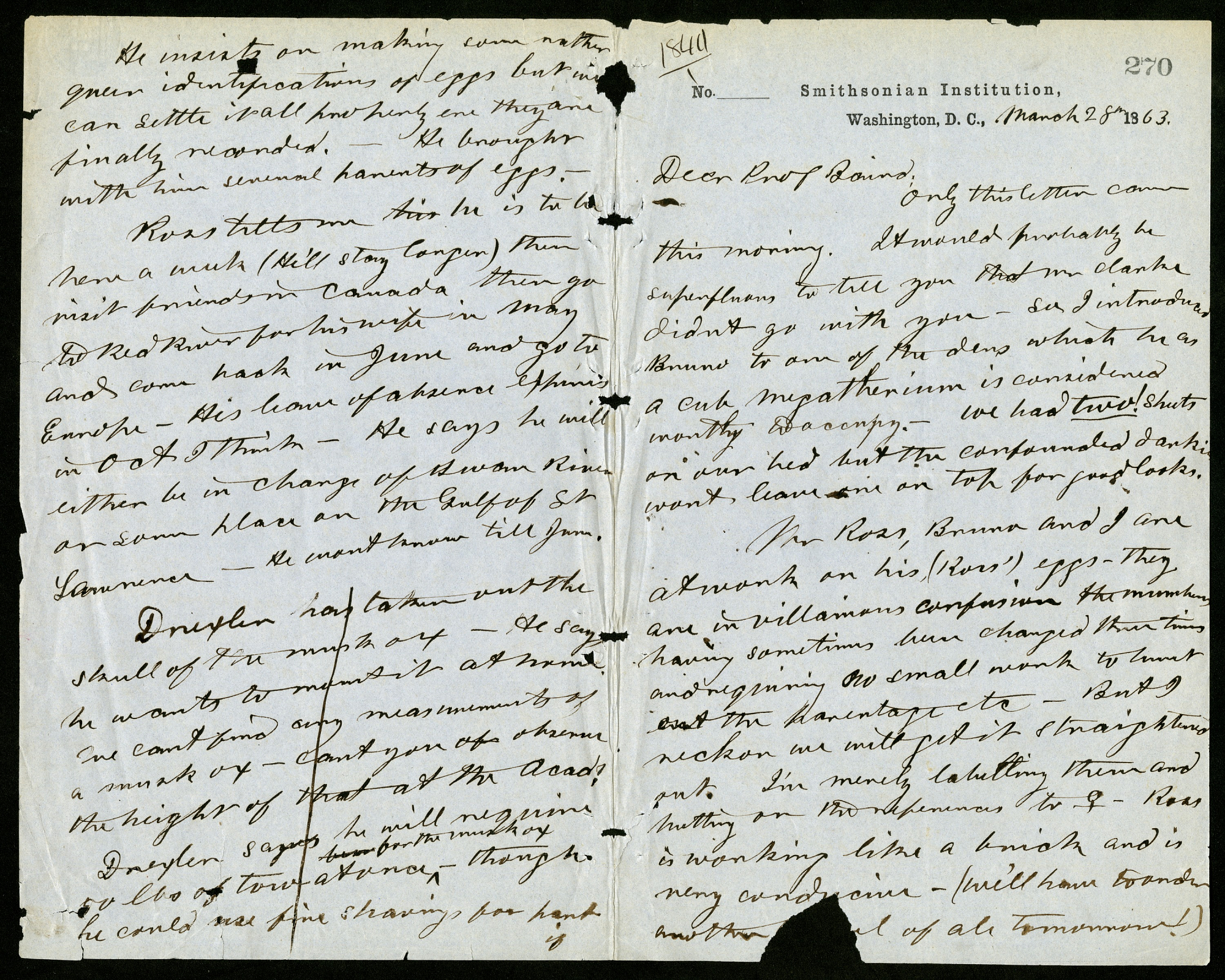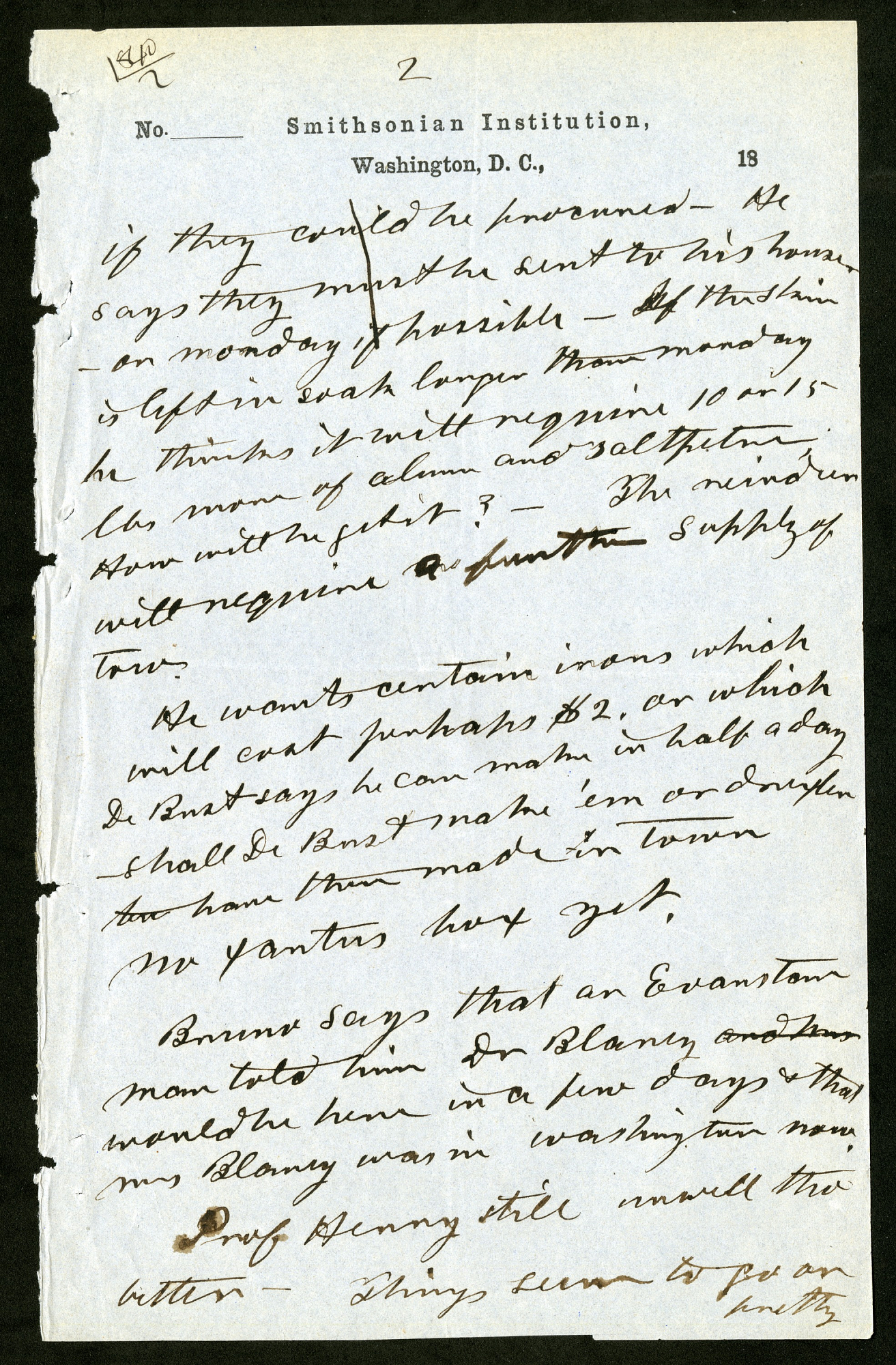The Megatherium Club

During their time at the cottage, the men decided to keep hens in order to reduce the cost of living. On some occasions, there would be a surplus of eggs and the members would then concoct eggnog, an egg-based alcoholic beverage, and play music at night. Over time, neighbors spread rumors of the Megatherium Club’s rowdy behavior and the stories eventually made it to the Baird household. After the club learned about the rumors from Miss Lucy Baird, daughter of Assistant Secretary Spencer Baird, they took a vote to get rid of the hens because “without egg there could be no egg nog” and without eggnog there would be less mischief and booze. Robert Kennicott then brought the hens to Miss Lucy Baird after she had been voted the most suitable caretaker.
While the group could only hold sporadic meetings due to field research and expeditions, they still managed to meet on occasion to go over notes and fraternize. The club had somewhat of a rambunctious reputation among neighbors and even called themselves “great beasts”, much like the sloth that they named themselves after. Though Smithsonian Secretary Joseph Henry did not approve of the men’s behavior, Assistant Secretary Spencer Baird allowed the men to let loose. When the club members lived in the Castle they often times drank beer at night and had sack races down its halls. It has also been noted that if the men were feeling up to it, and drank enough that night, they would sneak outside to the windows of the Henry daughters and serenade them.
Despite their mischief, these men were a dedicated group of naturalists, and we owe them a great deal for contributing their descriptions, classifications, and specimens to American science, the Smithsonian, and many other institutions in the U.S. They were whole-heartedly dedicated to their role in understanding the natural world, and there was an enduring kinship amongst the members of the Megatherium Club which can be seen in Kennicott’s letter home with detailed descriptions of the Megatheria. In the letter featured below, from Robert Kennicott to Assistant Secretary Spencer Baird, there is mention of a "cub megatherium" in the Castle, which turns out to be Kennicott's Brother, Bruno (Ira), who is given a “den” and immediately put to work sorting out another megatherium member’s (Ross’) egg specimens.
Robert Kennicott speaks of the club out of fondness, “It is five o’clock, when the Megatherium takes its prey, that the most interesting characters of the animal are seen. Then it roars with delight and makes up for the hard work of the day by much fun and conduction.”
What is known about the club is scattered in correspondence and field books throughout the Archives, as well as the archives held at Kennicott’s childhood home, a National Historic Landmark, The Grove. While there are still many unconfirmed rumors passed down through generations of staff, these pages are an effort to gather what we can confirm. It hints at the spirit of these men and women who still inspire wonder, discovery, and merriment today.
Related Resources
- Folks at Home: February 17, 1863, Robert Kennicott, The Grove National Historic Landmark, Glenview, Illinois
- Partying like it's 1855, Castle of Curiosities App, Pamela M. Henson



